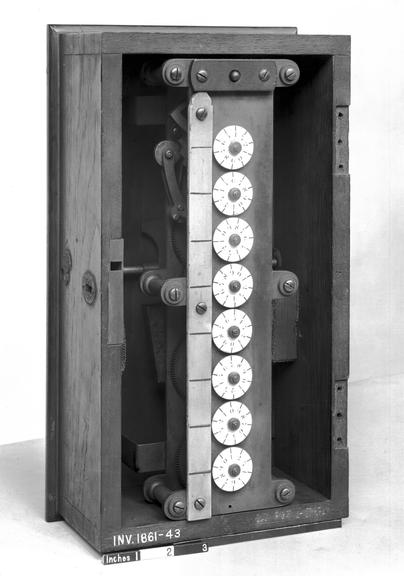Watt's Engine Counter
1775-1785


Watt's engine counter and framed diagram, with wooden lid, by Boulton & Watt, Birmingham, England, 1775-1785
When Matthew Boulton and James Watt were introducing their improved steam- engine for pumping in the Cornish mines, payment in many cases was made by the pumping work performed. This work was recorded by a counter, fixed on the engine beam, and constructed to register the number of strokes performed. It is stated that the mine owners objected to the readings of these instruments, on the ground that they counted the short strokes of the engine equally with the complete ones. The apparatus consists of a locked box containing a pendulum which, by a reversed escapement, drives a series of counting wheels; indexes on the spindles of these wheels register the number of oscillations on a series of dials advancing in powers of ten.

